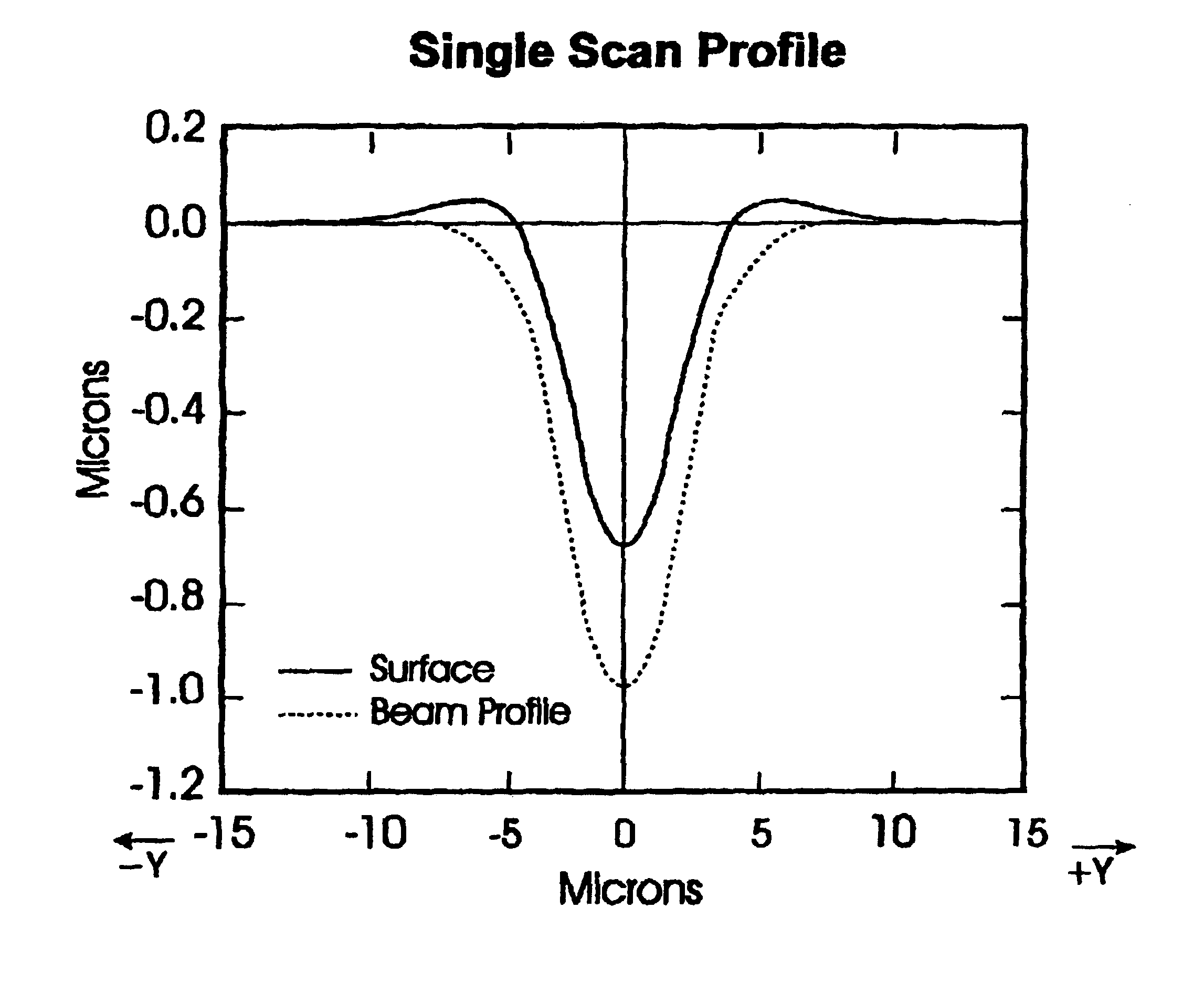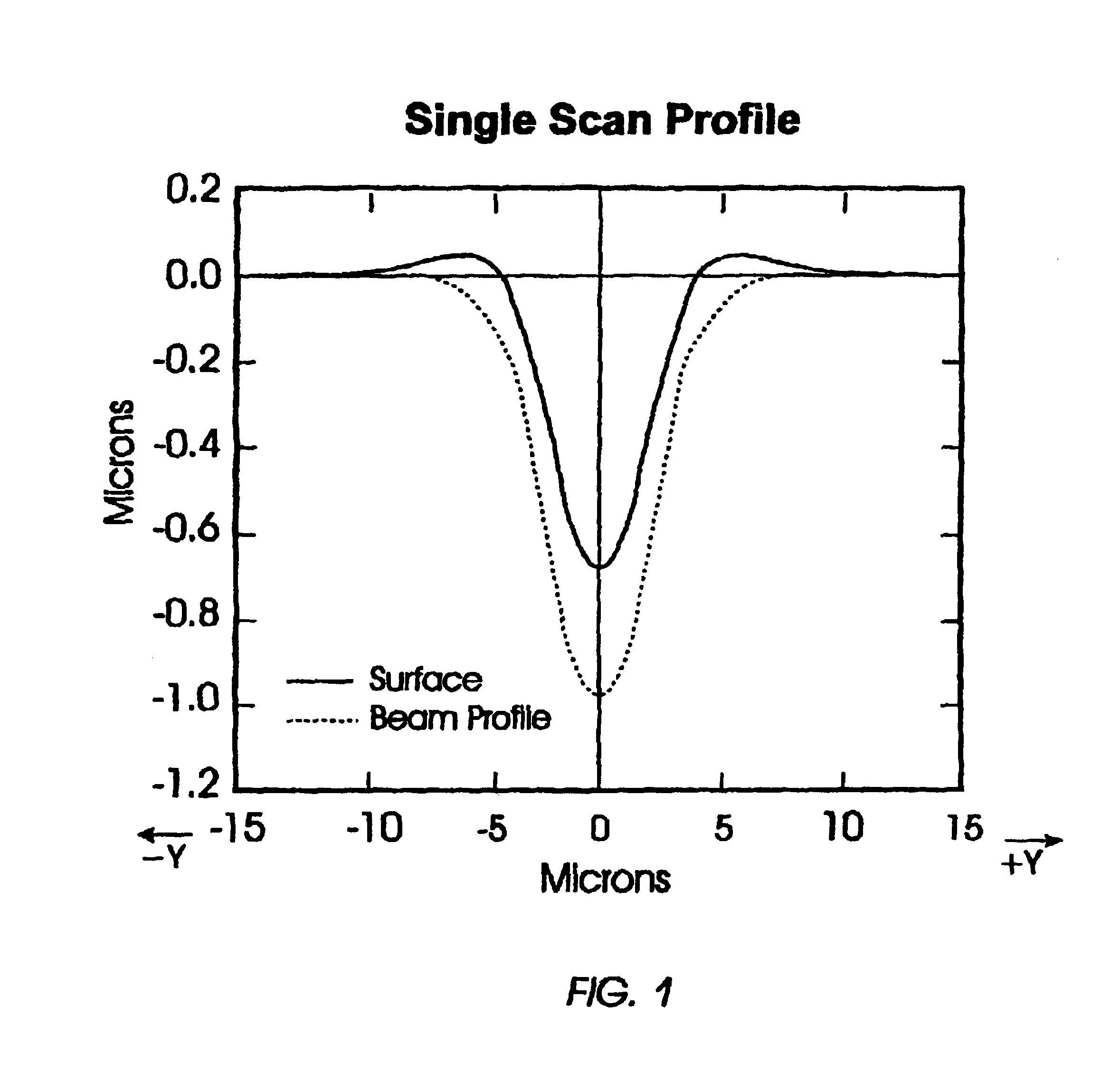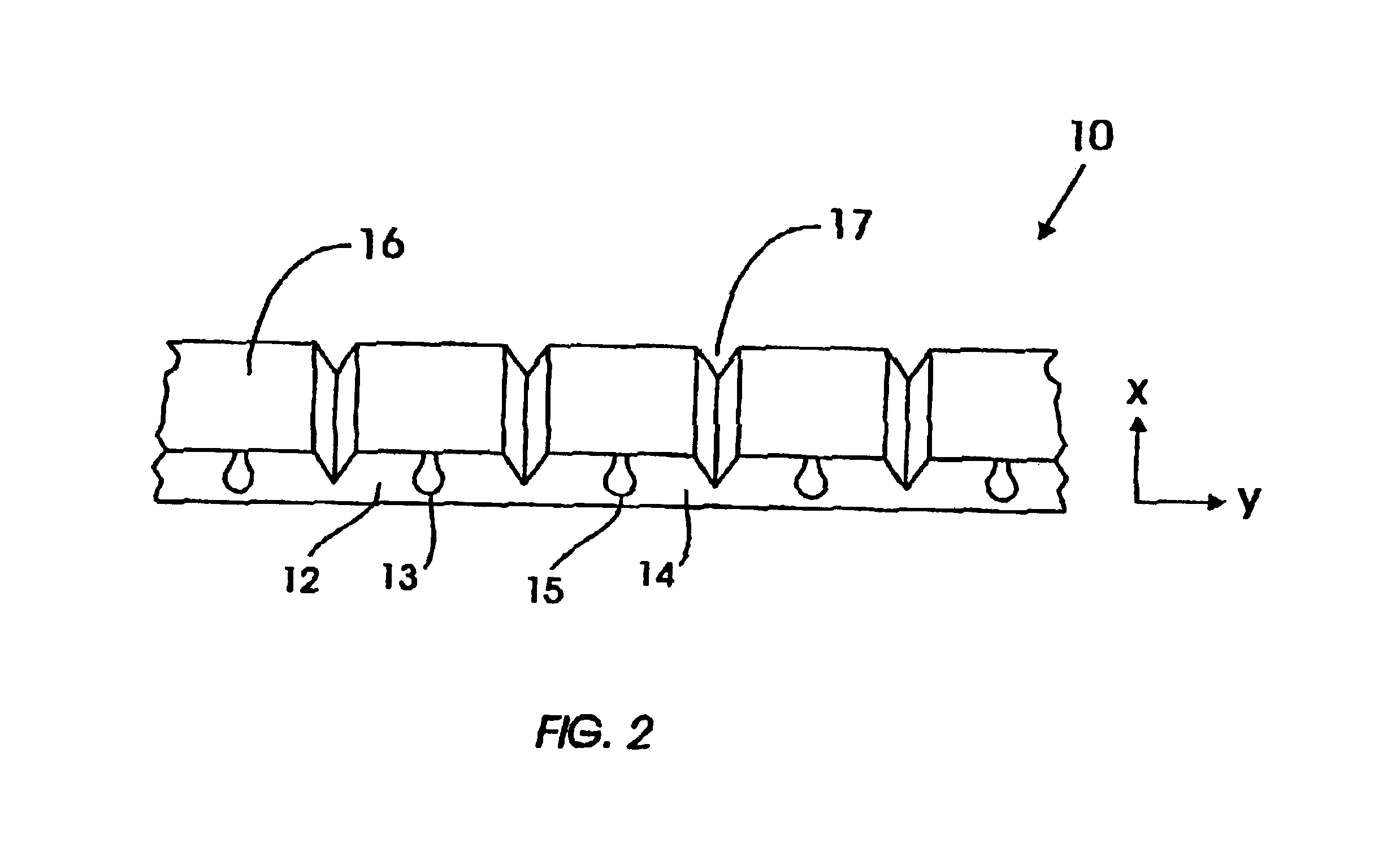Laser cutting method for forming magnetic recording head sliders
a technology of magnetic recording head and slider, which is applied in the manufacture of instruments, manufacturing tools, and recording information storage. it can solve the problems of affecting the manufacturing cost of the sawing process, affecting the sawing process, and causing a variety of physical damage to the slider material
- Summary
- Abstract
- Description
- Claims
- Application Information
AI Technical Summary
Benefits of technology
Problems solved by technology
Method used
Image
Examples
Embodiment Construction
[0014]The ceramic wafers from which the sliders are fabricated according to the method of the present invention are commercially available from various sources, such as 3M Corporation and Sumitomo.
[0015]The machining of sliders by laser ablation to create recesses in the slider disk side and thereby form the rails of the ABS is known, as described in U.S. Pat. No. 4,835,361. The previously cited IBM '048 patent suggests that partial cuts in the wafer row may be formed by laser ablation, but gives no details of such a process.
[0016]The cutting of material by laser ablation has been used for a number of applications that are not sensitive to edge quality or cleanliness, so the mere suggestion that it can be used for scoring sliders in a ceramic wafer row does not teach that a practical process can be developed. It is known that standard laser processing produces an edge quality that is not as desirable as that resulting from diamond saw slicing, particularly in regard to material prot...
PUM
| Property | Measurement | Unit |
|---|---|---|
| Diameter | aaaaa | aaaaa |
Abstract
Description
Claims
Application Information
 Login to View More
Login to View More - R&D
- Intellectual Property
- Life Sciences
- Materials
- Tech Scout
- Unparalleled Data Quality
- Higher Quality Content
- 60% Fewer Hallucinations
Browse by: Latest US Patents, China's latest patents, Technical Efficacy Thesaurus, Application Domain, Technology Topic, Popular Technical Reports.
© 2025 PatSnap. All rights reserved.Legal|Privacy policy|Modern Slavery Act Transparency Statement|Sitemap|About US| Contact US: help@patsnap.com



